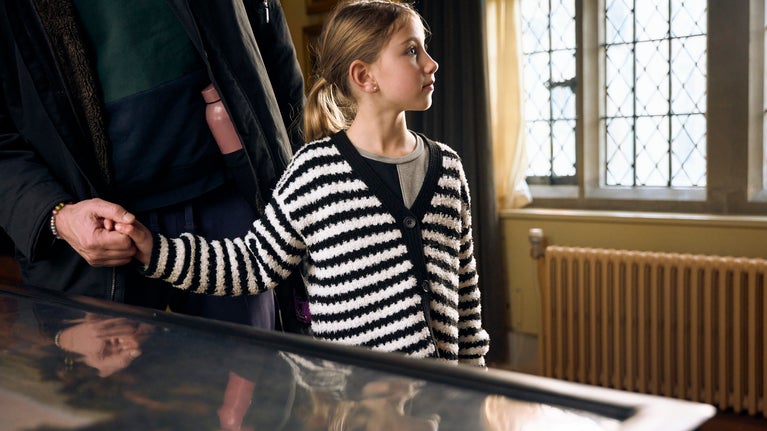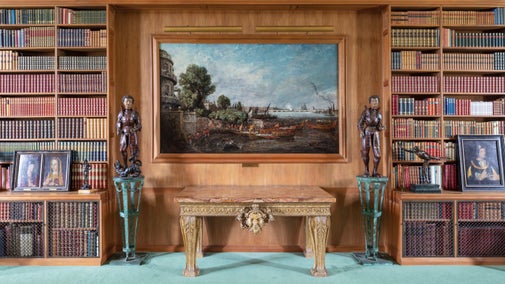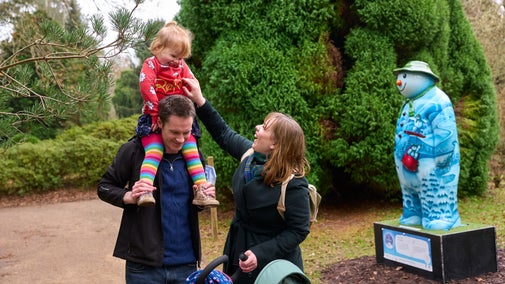
Anglesey Abbey and Lode Mill's collections
Explore the objects and works of art we care for at Anglesey Abbey and Lode Mill on the National Trust Collections website.

Lord Fairhaven lived at Anglesey Abbey from 1926 until his death in 1966. During this time, he created a comfortable country home with an eclectic collection of antiquities dating from the early Tudor period through to the 1960s. However, the building has a long and fascinating history that stretches back nine centuries.
Anglesey Abbey is believed to have been founded by Henry I in 1135 as the Hospital of St Mary.
In the early 13th century, it was converted into a priory of Augustinian canons (despite its name, it was never strictly speaking an abbey).
The canons' way of life ended abruptly in 1536 when Henry VIII began the Dissolution of the Monasteries.
Anglesey Abbey was granted to a lawyer, John Hynde, who removed some of the roof to reuse in a new mansion he was building at Madingley Hall, leaving the Abbey to decay.
In 1596, Anglesey was acquired by the Fowkes family, who were responsible for converting the remains of the monastic living quarters into a house in 1609.
The house was owned by Thomas Hobson from 1625–30, and by the Parker family from 1630–1734.
In 1734, the leasehold was bought by Sir George Downing (3rd Baronet), the founder of Downing College in Cambridge. Downing Street is named after his grandfather, the 1st Baronet (also called Sir George Downing). The 1st Baronet was largely responsible for the British acquisition of New York City from the Dutch.
Samuel Shepheard MP owned the house from 1739-78. Shepheard was a wealthy merchant who served as director of the new East India Company and headed the South Sea Company.
The Reverend John Hailstone, vicar of the neighbouring parish of Bottisham, bought Anglesey Abbey in 1848. He made several changes to the building, demolishing surviving masonry from the monastic buildings to create a stable block, and removing the Jacobean dormer windows from the front of the house.
He was probably responsible for naming the house Anglesey Abbey.

Lord Fairhaven was born in 1896 in Massachusetts to British civil engineer Urban Hanlon Broughton and his wife, Cara Leland Rogers – the daughter of oil tycoon Henry Huttleston Rogers.
He grew up in the United States before the family returned to Britain in 1912.
Along with his younger brother Henry, Lord Fairhaven bought Anglesey Abbey in 1926. The pair agreed that the first one of them to get married would sell his share to the other, so Henry sold his share when he wed in 1932.
Lord Fairhaven remained at Anglesey Abbey until his death in 1966, when management of the building was taken over by the National Trust.
Lord Fairhaven's father trained as a civil engineer, helping to construct Felixstowe docks in 1883–85. In 1887, he went to the United States and succeeded in making his fortune in the booming railroad industry.
Two years later, he met and fell in love with Cara Leland Rogers, the recently widowed second daughter of Henry Huttleston Rogers. Urban and Cara were married in November 1895, and their first son, Huttleston, was born the following year. His brother Henry arrived in 1900.
The Broughtons remained in the States until 1912, when they returned to Britain, sending Huttleston to school at Harrow.
Urban served as a Conservative MP for Preston from 1915 until 1928. Like his father-in-law, Broughton used his wealth for the public good.
In 1929, he bought the site at Runnymede in Surrey where King John had signed the Magna Carta, as it was under threat from developers.
Urban's philanthropy was recognised with a peerage, but he died in 1929 before it could be conferred. The title passed instead to his widow and to his eldest son, who, in 1931, together presented Runnymede to the National Trust in his memory.
Lord Fairhaven's grandfather began his career selling paraffin at his local market in Fairhaven, Massachusetts.
In 1861, he decided to try his luck in the oil fields of Pennsylvania, where 'black gold' had been discovered two years before. Over the next few years, he made his fortune, eventually becoming a leader at Standard Oil.
In a 1996 study, Henry Huttleston Rogers was listed as one of the 25 wealthiest people in US history.

The domestic wing of Anglesey Abbey has been restored to how it looked in the 1960s, when it was last used as a private home.
Rooms that have been restored include the Butler's Pantry, the Kitchen, the Scullery, the Brushing Room and the Servant's Hall, where staff used to relax when off-duty.
To ensure authenticity, we worked closely with the local community capturing memories of former staff or their relatives, many of whom lived in the nearby villages.

Explore the objects and works of art we care for at Anglesey Abbey and Lode Mill on the National Trust Collections website.
Discover the many layers that Anglesey Abbey has to offer. A Jacobean priory, once home to Lord Fairhaven.

Discover how the Lode Mill was rescued from being derelict for many years and restored by the new owner Lord Fairhaven.

Find out more about Anglesey Abbey’s glorious gardens, from the seasonal highlights to the history and design behind them.

Discover what it takes to volunteer at Anglesey Abbey and the opportunities currently available.

Plan your next family adventure at Anglesey Abbey.

Learn about people from the past, discover remarkable works of art and brush up on your knowledge of architecture and gardens.

Explore the objects and works of art we care for at Anglesey Abbey on the National Trust Collections website.
